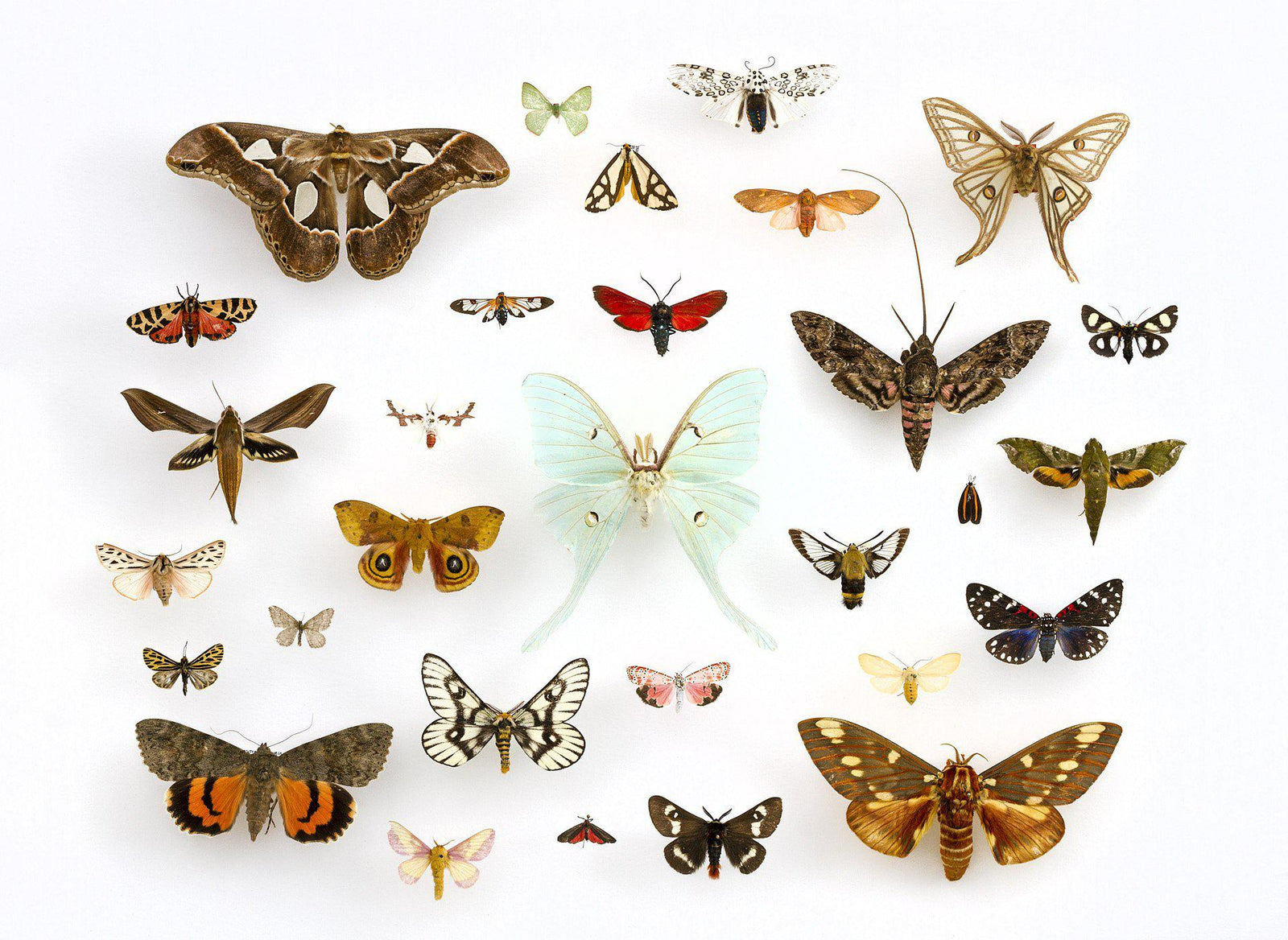
It's is National Moth Week! We feel like these often overlooked cousins of butterflies deserve their week in the limelight! Moths are pretty incredible creatures, and it is estimated that there are up to 500,000 species of moths on our planet, (there are only 17.5k species of butterflies that have been discovered around the world). We are sharing 5 fun facts about these beneficial friends!
One | Hidden Beauties
While moths are known for having brown, or dull colored wings, there are several species that have a beautiful and unusual pattern and vibrant colors to their wings. Known as one of the most beautiful and largest moths in North America, the lime-green Luna Moth has delicate, elongated wings that can span up to 7 inches! Count yourself fortunate if you see one, the luna moth only lives for 7 days, with their sole purpose being to mate and lay eggs. Many of the beautiful colors and varieties of moths go unseen as moths are mostly nocturnal, or take flight at dawn and dusk.
Two | Like a Moth to a Flame
While we see this reference in Shakespeare's The Merchant of Venice,
"Thus hath the candle singd the moath."
the idiom "like moth to a flame", was historically present long before Shakespeare's time. Scientists have several theories why moths are drawn to bright lights, but the most common is their behavior of transverse orientation, meaning they use a distant light source, like the moon, to navigate in the dark. Other light sources like a porch light or flashlight attract the moths, confusing them in what direction they should be flying. If you want to check out the moths in your area, simply head to a bright outdoor light at night, or turn on your own!
Three | That's a Big Bug
The largest moth known to us has a wingspan of over 12 inches and is often mistaken for a bat, when in flight. The Attacus Atlas moth is native to Southeast Asia, where their cocoons are so large they are used as purses! This large beauty, while frightening to some, can't harm you (or your closet) as it doesn't even have a mouth. It relies on fats and nutrients from it's immature stage and only lives 7-14 days once mature.
Four | Camouflage Experts
A variety of moths protect themselves from predators by use of camouflage. As seen on the Luna Moth, eyespots are common among many species of moths, causing predators to see the eyes of a much larger creature rather than the delicate wings of a moth. Mimicry is also seen in many species, which moths camouflaging themselves as leaves, flowers and even snakes and foxes!! The Hornet Clearwing Moth looks just like a hornet, should one land on your shoulder we would freak out right with you. Just the product of some stellar camouflage though as it is completely harmless and soft and fuzzy!
Five | Moths as Pollinators
When the sun sets moths take on the role of pollinators along with bats. Many moths never land on flowers, but only over over them, some moths have tongues longer than their bodies! Flowers to attract moths include yucca, morning glory and gardenia.










